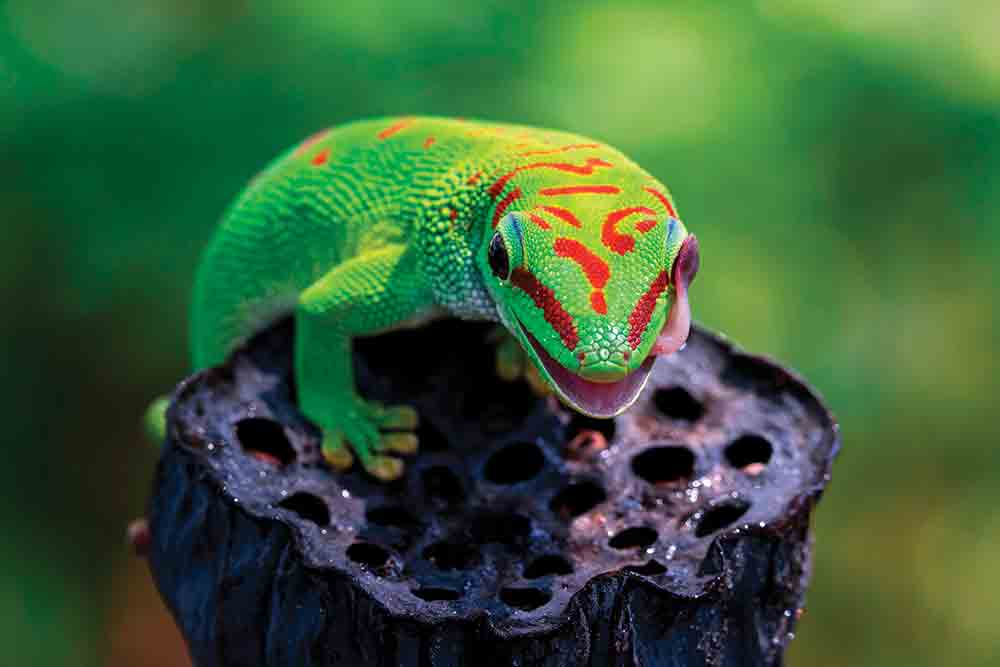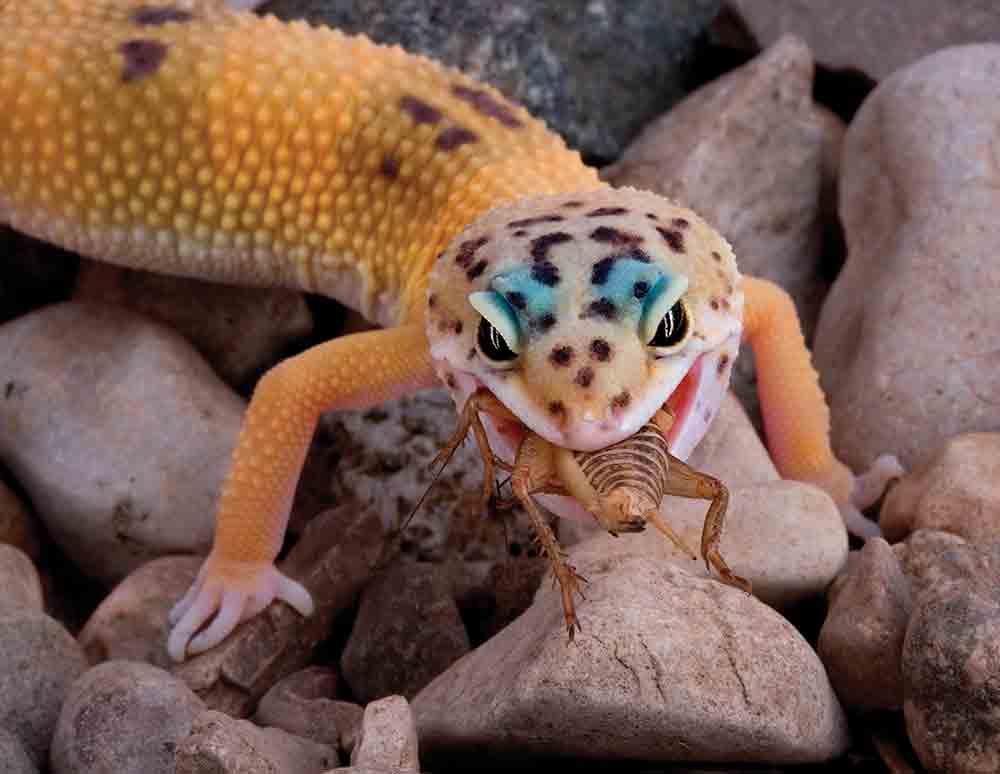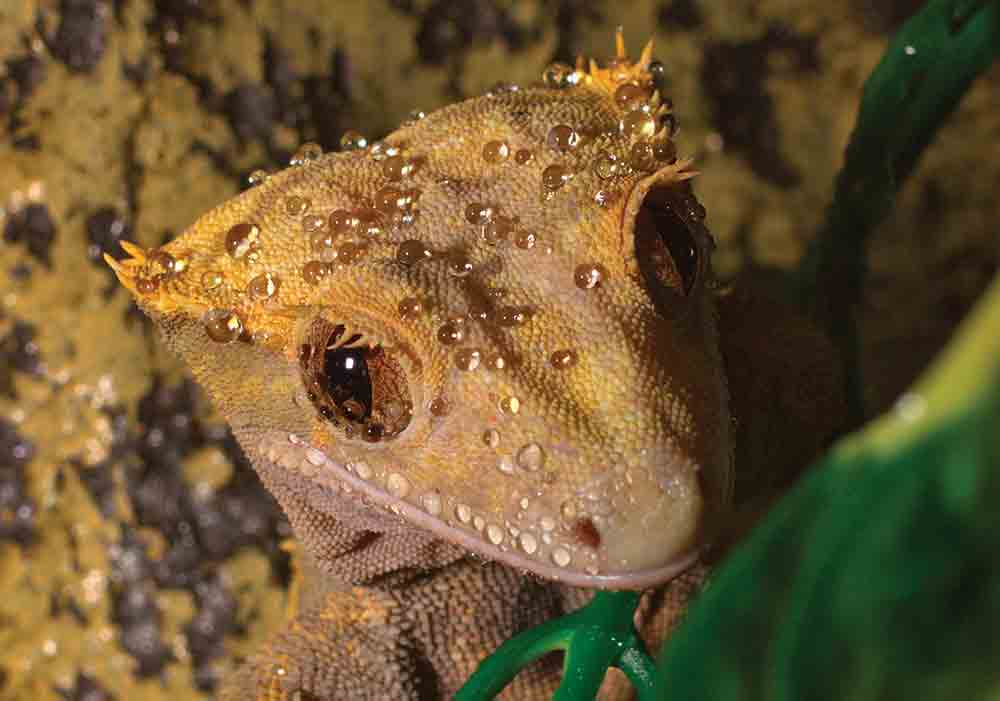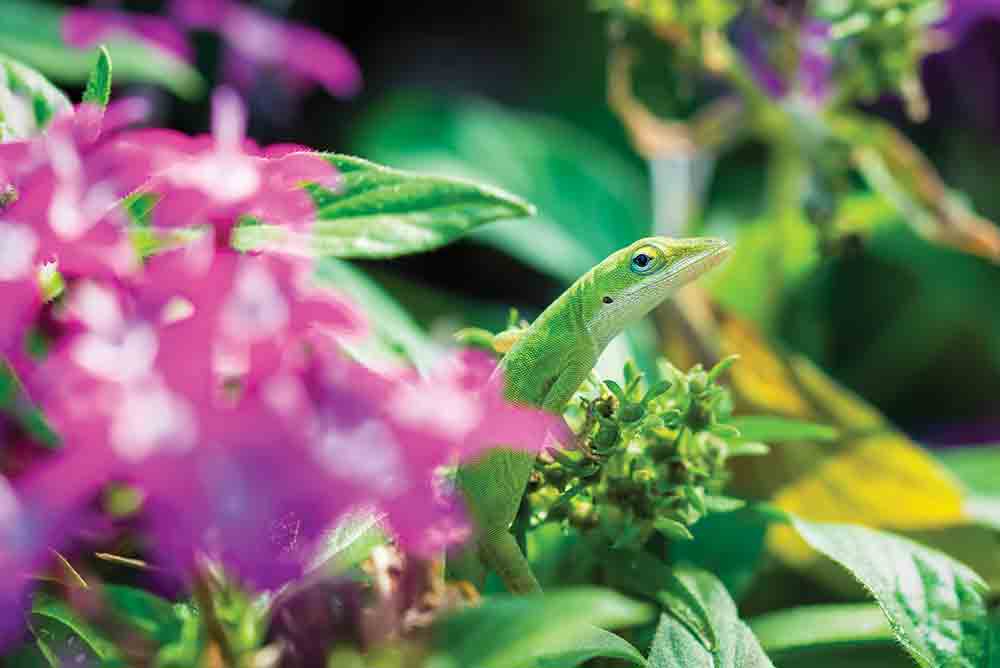Provisions to keep these reptiles can be had at nearly every pet and reptile store, and the major manufacturers have enclosure bundles designed specifically to house these lizards.
Those new to reptile keeping, and especially those new to keeping lizards, have a variety of species to choose from. Fortunately, some of the most popular lizard species are also quite often the more interesting species to keep. The leopard gecko, bearded dragon, crested gecko, green anole and day gecko are probably the most popular lizard species kept by reptile keepers, as they are widely available and, with the proper care, can live long lives.
How To Build A Bioactive Enclosure For Your Crested Gecko
Provisions to keep these reptiles can be had at nearly every pet and reptile store, and the major manufacturers have enclosure bundles designed specifically to house these lizards. Of these five species, two, the green anole and day gecko are better as display animals rather than an animal that can be handled. The other three tolerate handling better, and can be more “sociable” reptiles. Within this article, we’ll delve into the five species mentioned and detail some of the requirements to successfully keep them healthy.
Giant Day Gecko (Phelsuma grandis)
The giant day gecko (Phelsuma grandis) is a striking gecko, with its green coloration and red spots. This species is diurnal and arboreal. It is a large gecko that grows to about 8 to 10 inches in length (males are larger) and can live up to 15 years in captivity. Unlike the leopard gecko or crested gecko, the giant day gecko does not tolerate handling as much as those other geckos, and are very fast as well as skittish. Some keepers though are successful in feeding them by hand.

Giant day geckos make great display animals. Photo by Kurit Afshen/Shutterstock
Giant Day Gecko Enclosure
A vertical, well-ventilated enclosure made of screen and glass that is 2’ tall by 2’ long by 1’ ft. wide will comfortably house an adult pair. These lizards require humidity of around 60 to 70 percent to thrive. Because these lizards are arboreal, a bioactive, planted enclosure with plenty of live plants and cork bark, branches and bamboo for them to climb is ideal. The live plants will also aid in keeping the humidity high.
Giant Day Gecko Substrate
Ideal substrates for your day gecko should include the capability to retain humidity. Orchid bark, cypress mulch, coconut chips and sphagnum moss are good choices for your lizards.
Ideal Giant Day Gecko Temperature/Lighting
The giant day gecko should be maintained in an enclosure with a temperature between 75 degrees Fahrenheit (23.9 degrees Celsius) and 80degrees Fahrenheit (26.7 degrees Celsius). These reptiles are out during the day, so choose a high quality UVB bulb appropriate for the size of the enclosure to ensure the lizard gets enough Vitamin D3. Maintain a basking spot of around 95degrees Fahrenheit using an incandescent light bulb. Again, the light bulb should be appropriately sized based on your lizard’s enclosure size. The bottom of the enclosure should maintain a temperature of around 75-80 degrees Fahrenheit during the day and shouldn’t drop below 68 degrees Fahrenheit at night. A temperature gun will help.
What To Feed Your Giant Day Gecko
Giant day geckos are omnivores and in the wild eat both insects and fruit and even small lizards. In captivity, you can feed them a diet of live insects such as crickets, mealworms, and dubia roaches dusted with a high-quality calcium/vitamin D3 supplement. Commercial gecko foods are also ideal as they provide a complete nutrition for these reptiles.
Is The Giant Day Gecko Right For You?
The giant day gecko, with its striking coloration in a bioactive or naturalistic terrarium setup is an ideal display animal. Beautiful to look at and watch hunt live insects, this lizard does better if not handled too much, if at all. Those who enjoy the beauty of this species but don’t have to or want to handle a reptile would would be ideal keepers of day geckos. If you want a gecko that you can hold, choose a different species, such as a leopard gecko or crested gecko.
Inland or Central Bearded Dragon (Pogona vitticeps)
What would a great lizard list be without the bearded dragon? Arguably the most popular lizard with reptile keepers? The beardie as its slang name implies, is so named because of the “beard” that this lizard is known to display. Long a mainstay with reptile keepers, the bearded dragon is the largest lizard on this list, is a favorite amongst celebrities who keep reptiles, and is widely captive bred in the United States and around the world. It is known to be easily tamed, and their care requirements are easily established given the right husbandry. And they come in several colorations, including brown, red, yellow, white, reddish brown, and orange.

The bearded dragon is arguably the most popular pet lizard. Photo by Robert Keresztes
Bearded Dragon Enclosure
Bearded dragons are large lizards, with an average size of 2 feet in length, with hatchlings around 4 inches in length. House them in a long enclosure rather than tall. As such, you can start a hatchling bearded dragon in an enclosure equivalent to 40-60 gallons. Be prepared to move your beardie to a larger enclosure of a 75 gallon equivalent when your beardie reaches adult size. The larger the terrarium, the better for this large reptile. A screen top is necessary for proper ventilation.
Bearded Dragon Substrate
Substrate for juvenile bearded dragons can include newspapers, reptile carpet and even tiles. These substrates prevent accidental ingestion. Adults can be kept on these substrates as well as reptile sand, which is the most common substrate for adult bearded dragons. You can mix the sand with clean soil that is free of fertilizers or pesticides.
Bearded Dragon Temperature/Lighting
Bearded dragons like it hot. As in desert hot. They are after all native to the deserts of Australia, where temperatures can exceed 100 degrees Fahrenheit (37.8 degrees Celsius). Provide your beardie with a basking site of around 100 degrees Fahrenheit on one end of its enclosure, with the other end of the enclosure kept at 80 degrees Fahrenheit. This can be achieved with a basking spotlight set on the metal screen or clamped onto the enclosure. To achieve the ideal temperature range, a thermometer is necessary as is the proper spotlight bulbs. Most of the reptile product manufacturers have the bulb wattage and distance from bulb temperatures written on the box that can help guide you in purchasing the correct basking bulb.
And finally, UVB lighting is extremely important to this species. You must provide UVB lighting over the rest of the enclosure, in addition to the targeted basking spot bulb. A fluorescent UVB tube in a matched light fixture will help you attain proper UVB lighting. Consult with the manufacturers websites to determine which of their UVB bulbs are best for your bearded dragon.
Bearded Dragon Feeding
Bearded dragons eat a variety of fruits and vegetables as well as insects such as crickets and mealworms. When feeding insects, gut load and dust them with a vitamin/mineral supplement and calcium. You can dust them in a bag, lightly shaking the insects in the bag until they are coated with the powder. Conversely, you can use a cricket shaker as well, which is a plastic cup with a tube that enables you to shake gently and then let the crickets crawl into the tube for placement in your beardie’s enclosure.
Feed your bearded dragon vegetables such as carrots, zucchini and romaine lettuce, as well as collard greens, mustard greens and dandelion. Avoid iceberg lettuce as there is no nutritional value. You can also feed commercially available foods from the major reptile product manufacturers as well. These foods are formulated specifically for the bearded dragon and are a great addition to the fresh foods that your bearded dragon eats every day. Keep a water bowl large enough for them to crawl into full of fresh water. Mist your bearded dragon daily with a spray bottle. Mist the enclosure as well but don’t overdo it. They don’t need too much humidity. Mist enough so they can lick any water droplets they find in their enclosure.
Is The Bearded Dragon Right For You?
Bearded dragons are ideal for those who enjoy a lizard that is more easy to handle than some of the other species on this list. They tame rather well, are easy to feed and are fairly long lived. They are also inquisitive and are smarter than you think.
Leopard Gecko (Eublepharis macularius)
The leopard gecko (Eublepharis macularius) is one of the most popular lizards amongst reptile keepers. The species has been widely captive bred around the world for more than 35 years and come in a range of colors and patterns, or morphs. Native to Afghanistan, Iran, Pakistan, India, and Nepal, this reptile is found in rocky and dry grasslands and the desert regions of these countries. These lizards are long lived, with some captive specimens living well into their 20s. This of course is dependent on proper care of this species.

Leopard geckos are one of the top two pet lizards. Photo by Cathy Keifer/Shutterstock
Leopard Gecko Enclosure
Leopard geckos are relatively small lizards and as such, don’t need huge enclosures to thrive. You can house one or two leopard geckos from hatchling to adult size in a minimum 20 gallon enclosure (30”x 12” x 12”) provided they have ample places to hide amongst the floor space. These reptiles are a ground dwelling species, and they will use the space given them. Hides enable them to hide away when they wish.
The larger the enclosure the better if you decide to keep multiple leopard geckos (multiple females or a single male to multiple females). Keep in mind though that sometimes these reptiles will be aggressive toward each other, so you may have to house them separately if this is the case. Also, keeping a male with a female can result in babies, and not everyone wants to care for baby leopard geckos. These reptiles will do perfectly fine on their own, in their own enclosure.
Leopard Gecko Substrate
Reptile carpet, newspaper, pea gravel and even flat stones or ceramic tiles are safe substrates for leopard geckos. These tend to be very easy to clean. Also, leopard geckos tend to defecate in the same corner of their enclosure.
Leopard Gecko Temperature/Lighting Requirements
An undertank heat pad is still the most popular heat source for your leopard gecko. It can been complemented with UVB lamps and low wattage lights left on 12 hours a day. Leopard geckos need Vitamin D3 and this can be accomplished with dusting food items with Vitamin D3 supplements and/or a UVB lamp at the proper light intensity for leopard geckos. There are two trains of thought on the use of UVB lighting. While UVB lighting is not required for these reptiles to survive, this lighting does provide some advantages that are great for their immune system and overall health. Create a temperature gradient on one side of the enclosure to ensure that your leopard gecko has the capability to move from the hot area (80 to 85 degrees Fahrenheit or 26.7 to 29.4 degrees Celsius) of the enclosure to the cool area (75 to 80 degrees Fahrenheit , 23.9 to 26.7 degrees Celsius) when needed. You can achieve the gradient using an undertank heat pad and UVB/fluorescent light fixtures and bulbs. Consult the manufacturers as they will be able to tell you the correct solution for your reptile and its enclosure.
Feeding Your Leopard Gecko
Leopard geckos can take live, gut-loaded crickets dusted with vitamins and calcium supplements. They will also eat mealworms. In addition, you can also feed them commercially prepared foods specifically designed for leopard geckos. These foods often are made with complete nutrition in mind. Your reptile store sells gut loading foods for your feeders. This ensures that your reptiles get good nutrition as well. Make sure the water bowl has fresh water daily, and keep it shallow so your gecko can crawl out if it goes in.
Are You Right For a leopard Gecko?
The leopard gecko is ideal for those who like to occasionally interact with their reptiles. They tolerate occasional handling, and some even learn to be hand fed. With proper husbandry, these reptiles make great companions to reptile lovers. The leopard gecko might be the most popular lizard amongst reptile keepers. Properly cared for, they can live very long, with some living 20 plus years.
Crested Gecko (Correlophus ciliatus)
The crested gecko (Correlophus ciliatus) is one of those amazing lizards that not only looks good, but makes an amazing pet. This reptile, up until 1994, was thought to have gone extinct in its native New Caledonia. It was a storm that hit the island when the reptile, also known as the eyelash gecko, was rediscovered. Now it is one of the most widely captive-bred lizards in the world, with a variety of colorations and patterns available that make this gecko a living work of art.

The crested gecko is an arboreal lizard and is very popular with reptile keepers. Photo by Dan Olsen/Shutterstock
Enclosure For Your Crested Gecko
Crested geckos do well in enclosures that are tall rather than long. You can house a male and female crested gecko in a minimum 20 gallon tall, glass enclosure. These reptiles require 50 to 70 percent humidity. Buy a hygrometer and test humidity daily. If you live in a warm area that has high humidity all year round, consider keeping your crested gecko in a screened enclosure. Because these reptiles spend a vast majority of their time above ground, provide plenty of wood branches criss crossed in the vivarium that enables them climb and to rest. Provide plenty of foliage but don’t over clutter the enclosure.
Crested Gecko Substrate
For ease of use, reptile carpet from the major manufacturers is the easiest choice as these reptiles spend most of their time off the substrate. A peat moss-based soil mix also works well, just make sure it is free of perlite. If you go the bioactive route with your crested gecko enclosure, consider coconut fiber that is mixed 50 percent with clean soil as a base for growing live plants.
Crested Gecko Temperature/Lighting Requirements
Keep your crested gecko in temperatures between 78 to 82 degrees Fahrenheit (25.6 to 27.8 degrees Celsius) during the day. At night, temperatures in the low 70s (21 to 22.8 degrees Celsius) are good. You can achieve the ideal temperatures using a low watt incandescent bulb or ceramic heat emitter housed in a reflective fixture. Place this on top of the screen top. This enables the crested gecko to thermoregulate. Conversely you can also use an adhesive-backed heat pad or heat tape regulated by a thermostat if your enclosure allows for it. Whichever heating solution you choose, make sure the bottom of the enclosure is cooler than the top. The addition of UVB lighting is an evolving topic with this species, with some saying UVB is not necessary because these reptiles are nocturnal, and others saying that exposure to low levels of UV light has benefits to the health of these reptiles. If you choose to use a UVB light, make sure that it is a low level light source that doesn’t add too much heat to the enclosure.
What To Feed Your Crested Gecko
Commercially available crested gecko foods are the most popular foods for these omnivores. These are available as powders that you mix with water, as well as ready to eat gels. You can also feed your crested geckos crickets, roaches, waxworms, and silkworms. If you are to feed your cresties an insect diet, feed crickets three times a week, dusted with a vitamin/mineral supplement that contains calcium and vitamin D3. And make sure you also feed them crested gecko foods that are available at your local reptile store or online. The crested gecko can live just fine with one of the commercially prepared crested gecko foods from the various manufacturers. Keep a shallow water dish filled with fresh water in your gecko’s enclosure. If you live in a dry area, mist the enclosure nightly.
Are You Right For A Crested Gecko?
Crested geckos are ideal for those who have been keeping reptiles for years, as well as those who are new to reptile keeping, provided that you read up on how to properly care for these geckos prior to purchasing one. Unlike the green anole or the day geckos, crested geckos can tolerate occasional handling, and some will even feed right out of your hand. The crested gecko is a long lived reptile, with many that are properly cared for living 15 to 20 years.
Green Anole (Anolis carolinensis)
The green anole (Anolis carolinensis) is probably one of the very first lizards kept amongst reptile keepers. It was the very first reptile I kept. I saw an ad in Boy’s Life Magazine for a “real live chameleon” and sent $2.95 plus shipping and handling, and it came in a perforated box about a month later, complete with 100 mealworms. Native to the southeastern United States, the green anole is a smallish lizard that grows to about 8 inches in length, including the tail. It is primarily green in coloration, with individuals sometimes displaying a bluish or yellow tint. Males are generally larger and often display their colorful dewlaps, which are extended to attract females and threaten males in the vicinity. Virtually all green anoles are wild-caught, so keep this in mind when choosing one at your local reptile store. Choose alert and healthy individuals, and if you can witness them feeding, that is ideal.

The green anole is one of the first species kept by reptile keepers. They were super popular in the 1970s. Photo by Dean Fikar/Shutterstock
Green Anole Enclosure
Because green anoles are arboreal, choose a tall enclosure of a minimum equivalent of 20 gallons for a few anoles. Keep in mind that males will most likely fight, so keep just a single male to an enclosure. A 20-gallon tall terrarium with a screen top will enable you to house a single male and one or two females. With multiple lizards, you will have to ensure that each is getting their fair share of food items. You can find a vertically-oriented terrarium as a complete kit from the major manufacturers. Often included in these kits are substrate, light fixtures, a decorative or themed background and sometimes climbing branches. Make sure that you add some climbing branches to your green anole terrarium. Plants are a must. Live plants such as pothos, ficus and hibiscus are ideal. These plants will also provide much needed humidity in your anole’s enclosure. If you choose artificial plants, make sure that they are waterproof. When you do your twice daily misting, you won’t want any material leeching off the artificial plants. Green anoles get their water from water droplets, so misting is important. Keep a shallow water bowl in the enclosure to help with humidity. Choose a substrate that can hold humidity for the bottom of your anole’s terrarium. Untreated soil or cypress bark works well. The depth depends on if you wish to grow plants in the soil. For ease of use, potted plants work well in this regard.
Green Anole Substrate
Green anole substrate should consist of a peat moss and untreated soil mixture with a layer of orchid bark on top. Coconut husk substrates and cypress mulch are also good choices. Avoid sand or gravel.
Green Anole Temperature, Lighting and Humidity Requirements
Green anoles are active during daylight hours and as such, require proper lighting to maintain their good health. Choose a UVB light that is appropriate for the size and depth of your anole’s enclosure so your anole can metabolize calcium and your live plants get the proper lighting as well. Keep the terrarium with an ambient cage temperature of around 80 degrees Fahrenheit (26.7 degrees Celsius) and overnight temperatures from the upper 60s to low 70s (20.0-22.8° Celsius). The basking spot should be around 85-90 degrees Fahrenheit (29.4-32.2 degrees Celsius). Humidity should be around 70 percent. Invest in a thermometer/humidity monitor and check it daily.
What To Feed Your Green Anole
Green anoles are insectivores. Live crickets and mealworms are the staples for these little lizards. Gut load these insects first and then prior to feeding, dust them with a vitamin/mineral supplement. You can find gut-loading diets and vitamin/mineral supplements at your local reptile or pet store or online. You can also purchase commercial anole foods as well to supplement the live foods. A shallow water dish should be kept in your anole’s enclosure as this helps with humidity. Daily misting will ensure water droplets are available for the anole to lap up.
Are You Right For The Green Anole?
The green anole, when properly cared for, can live up to around six years. This species is not for those who like to handle their reptiles. They are a skittish little lizard that don’t take to handling much, if at all. The green anole would make a great display animal in a nicely landscaped vertical enclosure. This could be placed in a nice location such as your living room. With plenty of hiding places, and proper care, your anole should do just fine.
John Virata is the editor of REPTILES magazine and ReptilesMagazine.com. He bought his first reptile when he was 10 years old and keeps two corn snakes (15 years old) a California kingsnake (10 years old) , a western hognose snake (8 years old) and a 9-year-old ball python. Reach him at Reptileseditor@gmail.com.

